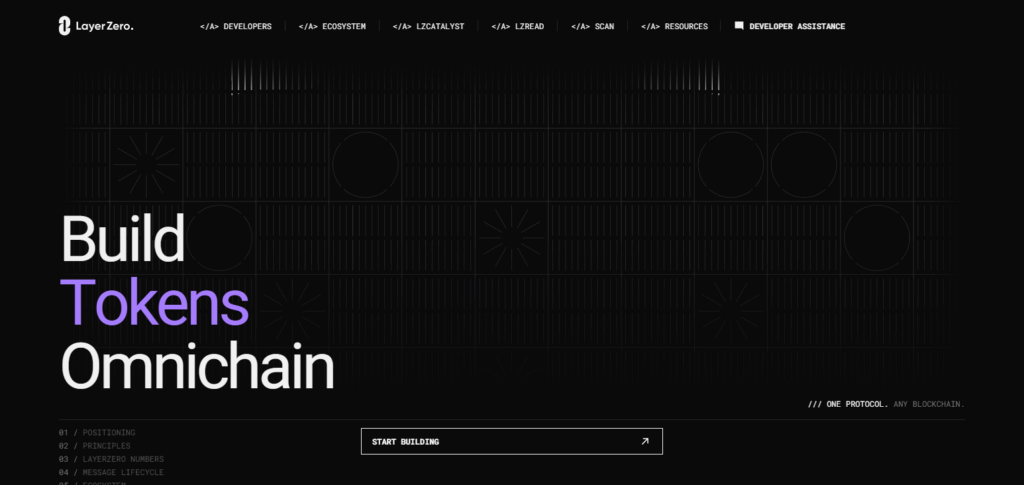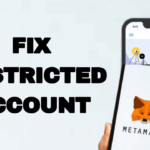In this article, I’ll discuss the How to Unify Bridging Aggregator Governance Across Chains.
As DeFi ecosystems grow in every direction, synchronized governance emerges as a pillar of security, scalability, and a cohesive user experience.
I’ll identify the pitfalls of siloed decision-making, assess the contribution of cross-chain tooling to the solution, and propose actionable frameworks to embed chain-neutral governance for bridging aggregators.
Understanding Bridging Aggregators
Bridging aggregators are decentralized platforms that knit together many blockchain bridges under one user-friendly interface, letting people transfer assets or data between chains hassle-free.

Instead of committing to a single bridge, these aggregators scout out the best cross-chain route, weighing speed, cost, and dependability. By embedding multiple bridge protocols—such as Wormhole, Hop, and Celer—they cut down on fragmentation in the DeFi space and bolster interoperability.
In doing so, they lay down the cornerstone infrastructure that enables smooth communication and fluid asset movement across different blockchain networks.
How to Unify Bridging Aggregator Governance Across Chains

Example: Building a Unified Governance Layer for LI.FI Across Ethereum, Arbitrum, and Solana
Launch Governance Contracts Across Networks
- Mint modular contracts calibrated for each underlying protocol
- On Ethereum and Arbitrum, instantiate EVM-native contracts powered by OpenZeppelin Governor
- On Solana, leverage the Anchor toolkit to embed the governance stack
Layer Cross-Chain Messaging Infrastructure

- Packages must encase proposal ID, running vote count, and step-by-step execution payload
- Guard delivery with trust-minimized proofs, opting for optimistic or zk verification
Aggregate Governance Via a Single Dashboard
- Develop a unified frontend that pulls proposals and voting states from every chain
- Allow users to cast votes regardless of the chain, with the state syncing across the ecosystem
- Integrate LI.FI’s bridging stack to craft gas-light transaction routes
Converge Treasury and Fee Flows
- Route aggregator earnings from every network into a single multi-chain treasury
- Employ smart contracts to segment fees and enact treasury moves dictated by consolidated votes
- For instance, a 0.3% bridge fee → 0.2% to treasury, 0.1% to stakers
Governance-Driven Protocol Evolution
- Draft proposal to revise bridge logic or introduce new chains from any single chain
- Upon attaining quorum, relay upgrade directives to every connected chain
- Contracts now execute upgrades concurrently through coordinated cross-chain invocations
Why Unifying Governance Matters
Seamless Cross-Chain Coordination: One governance layer simplifies the decision-making process across every chain. Protocol upgrades, parameter changes, and feature rollouts can be handled in one set of votes, avoiding the mixed signals and delays that can arise when jurisdictions overlap.
Single Proposal Pipeline: Instead of crafting the same proposal for each chain, developers submit it once. A unified voting system channels that proposal to the entire ecosystem, shrinking the calendar and the room for human error.
Strengthened Security Posture: When governance is siloed, each chain may have its own loophole, and a successful exploit can ripple outward. An integrated design closes those gaps, so a unified set of rules fortifies every linked chain against coordinated or opportunistic attacks.
Uniform User Experience: Token holders and community members no longer juggle separate voting weights or rules on different chains. A single governance interface fosters clarity, so participation feels the same whether the user is on the original chain or a layer-2.
Coordinated Upgrade Execution: When an upgrade passes, it can ripple outward in one motion. A unified governance layer schedules deployment across the entire architecture, curbing the bugs and incompatibilities that can surface when chains roll changes at different cadences.
Auditable and Open Processes: One governance dashboard shows every proposal, vote, and reasoning. This holistic view boosts transparency, simplifies third-party audits, and reinforces the trust required when many chains share a common economic and security substrate.
Path to Truly Interoperable DeFi: An integrated governance layer is more than a convenience; it is the bedrock for multi-chain synergy. Protocols can interleave, dApps can share liquidity, and economic activity can span chains, all secured by a coherent set of shared rules.
Technical Implementation Strategies
Cross-Chain Messaging Protocols
Leverage established interoperability layers such as LayerZero, Axelar, or Wormhole to securely relay governance payloads among distinct ecosystems. Each layer guarantees authenticated, non-repudiable delivery of vote proposals, quorum reports, and executable governance instructions, regardless of the originating or recipient chain.
Mirrored Governance Smart Contracts
Roll out identical governance modules on every target chain, replicating logic and state derived from a designated core chain. Each local instance subscribes to event streams from the central governance smart contract and autonomously replicates state changes, ensuring on-chain execution consistency.
Governance Hubs with Relayers
Create a logic-segregated governance hub chain that serves as the exclusive locus for consensus. Lightweight relayers monitor the hub for finalized votes and propagate the corresponding state changes to corresponding governance contracts on adjunct chains, enforcing coherent policy across the ecosystem.
Unified Proposal & Voting Interfaces
Construct cross-chain front-end portals that collate governance proposals, delegate registries, and voting power disclosures from every integrated ecosystem. By embedding aggregate front-ends such as Snapshot, Tally, or Agora, community members can submit, discuss, and vote from a single cohesive interface.
Interoperable Governance Tokens
Define governance tokens with multi-chain orchestration in mind, choosing among ERC-20, CW-20, or chain-native primitives per target ecosystem. Implement bridge-based or canonical token schemas so that the voting power corresponding to a user’s holdings is accurately and uniformly reflected across all chains.
On-Chain Voter Identity Proofing
Deploy Decentralized Identifiers (DIDs) along with cross-chain wallet reputation systems to authenticate voters on each chain. This safeguards against double voting while maintaining equitable representation in multi-chain governance.
Cross-Chain State Consistency
Leverage light clients, zero-knowledge proofs, or optimistic rollup architectures to securely propagate governance state changes. This guarantees that decisions achieve finality and remain trustless across all connected chains.
Cross-Chain Emergency Response
Design cross-chain governance emergency buttons empowering designated community members to, say, pause a compromised bridge instantaneously across every chain, minimizing risk when urgent action is paramount.
Flexible, Upgradeable Governance Modules
Develop governance contracts with modular, upgradable designs—like the Diamond Standard or various Proxy Patterns—so that governance logic can evolve without the overhead of redeploying complete systems.
Gas Cost Minimization and Voting Delegation
Integrate meta-transaction schemes or gasless voting modalities that use relayers, enabling governance participation with negligible fees, particularly benefitting users on chains where gas costs are prohibitively high.
Security and Compliance Considerations
Mitigating Cross-Chain Governance Exploits: Merging governance faces a wider threat landscape. Use vote throttling, multi-signature confirmation, and fraud-proof mechanisms to block hostile proposal injection or vote-stealing spanning different blockchains.
Assured Message Integrity: Always apply cryptographic validation—such as zero-knowledge proofs, Merkle roots, or trusted oracles—when relaying governance actions across chains. This guarantees the correctness of the payload and thwarts forgery and replay attempts.
Cross-Jurisdictional Regulatory Alignment: A global governance apparatus may touch diverse regulatory regimes. Comply with universal mandates: know-your-customer, anti-money laundering, personal data safeguarding, and DAO legal recognition—paying special attention when token voting triggers binding legal or financial consequences.
Cross-Chain Token Custody Hazards: Moving governance tokens across chains can create liquidity swings or inconsistent circulating supplies. Deploy robust bridging mechanisms and reconcile token ledgers across environments to prevent governance distortion.
Persistent, Verifiable Governance Trails: Operate a public, immutable governance archive that spans chains, recording on-chain logs and verifiable voting states. Openness cultivates confidence and permits any participant to trace proposal lifecycles and decision rationales.
Best Practices for Deployment
Select a Governance Anchor Chain First
Choose a single reference chain (like Ethereum or the Cosmos Hub) to serve as the governance anchor. All proposals and voting actions flow from this chain, which streamlines coordination and clarifies the single source of truth across the entire Bridging Aggregator.
Utilize Modular and Upgradable Contracts
Leverage contract architectures such as Proxies or the Diamond Standard to construct governance logic. These designs permit you to upgrade governance contracts over time while maintaining the same address, avoiding disruption and preserving state.
Integrate Cross-Chain Messaging at the Onset
Include mature messaging protocols (LayerZero, Axelar, or Wormhole) during the initial deployment. Doing so removes the burden of retrofitting and ensures secure, timely communication among governance actors and the chains involved.
Create Intuitive Governance Dashboards
Develop clear, responsive interfaces that allow participants to draft proposals, cast votes, and track decisions across chains. Pair existing governance tools such as Snapshot or Tally with custom cross-chain extensions to drive user engagement.
Validate Governance Logic in Controlled Environments
Execute thorough simulations and audits on public testnets or staging chains prior to going live. These environments reveal bugs in voting latency, message propagation, or relayer reliability ahead of mainnet exposure.
Support Delegated and Gasless Participation
Incorporate meta-transaction techniques or well-structured relayer systems to let users vote without direct gas costs. Allow holders to delegate their voting rights, making it straightforward for minor stakeholders to exert influence without on-chain burden.
Implement Safeguarded Emergency Governance Tools
Deploy time-delay contracts or multi-sig guardian setups that permit the freezing or reversal of vital governance moves in the face of security breaches or severe software defects.
Harmonize Token Economics Across Chains
When governance tokens traverse several chains, uphold consistent economics through verified bridges or centralized canonical token smart contracts, ensuring uniform voting influence and avoiding power imbalances.
Invite the Community from Day One
Bring stakeholders into the design, test, and iteration stages. Create open feedback channels and reward contributions, such as testnet prizes or DAO bounties, to foster trust and sustained involvement.
Craft Comprehensive Governance Documentation
Assemble thorough guides for developers, users, and auditors. Detail every step in the proposal process, specify quorum thresholds, explain voting mechanics, and analyze potential failure modes to promote clarity and rigorous accountability.
Future of Cross-Chain Governance
The future of cross-chain governance centers on creating genuinely interoperable, secure, and scalable infrastructures that enable decentralized protocols to harmonize decisions across diverse blockchain environments.
As DeFi and Web3 initiatives proliferate on multiple chains, governance itself will become chain-agnostic, energized by decentralized messaging protocols, multi-chain DAOs, and universal identity frameworks.
Breakthroughs like zero-knowledge proofs, AI-augmented decision-making, and autonomous governance agents will boost transparency, streamline processes, and broaden participation. Pioneer ecosystems—including Cosmos, Polkadot, and Optimism’s Superchain—are already forging cohesive policy modalities.
In the long run, cross-chain governance will transcend isolated voting procedures and evolve into composable governance layers, empowering decentralized communities to steward intricate, interlinked ecosystems with coherence, resilience, and universal accessibility.
Conclusion
Creating a single, cohesive governance model for bridging aggregators spanning multiple chains is crucial for a safer, faster, and more accessible multi-chain future. By integrating cross-chain messaging, flexible smart contracts, and common voting frameworks, teams can achieve synchronized, reliable governance that flows effortlessly between ecosystems.
Such a model diminishes operational silos and vulnerabilities while inviting users from any chain into the decision-making fold. As DeFi matures and new chains emerge, a uniform governance structure will be the linchpin for real, scalable interoperability and for sustaining user confidence in the entire decentralized layer.
FAQs
What is unified governance in the context of bridging aggregators?
Unified governance refers to a single, coordinated system that manages proposals, voting, and upgrades across multiple blockchain networks where a bridging aggregator operates.
Why is unifying governance across chains important?
It ensures consistent decision-making, reduces security risks, improves user experience, and eliminates fragmentation in protocol upgrades and community voting.
What technologies enable unified governance across chains?
Technologies like LayerZero, Wormhole, Axelar, and IBC provide secure cross-chain messaging. Smart contract standards and DAO tools like Snapshot and Tally also help implement cross-chain governance.








